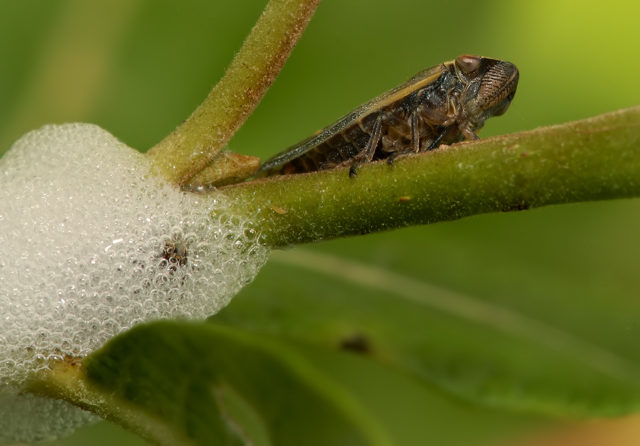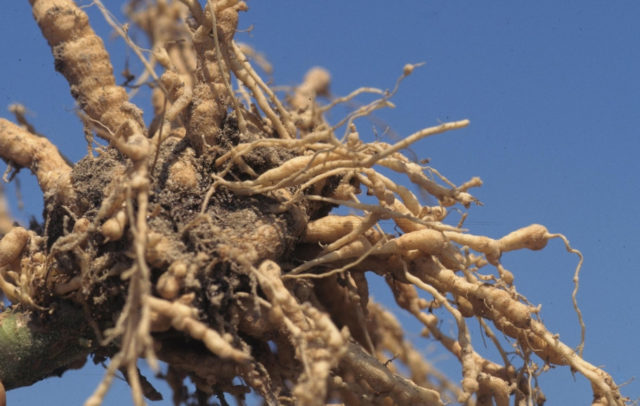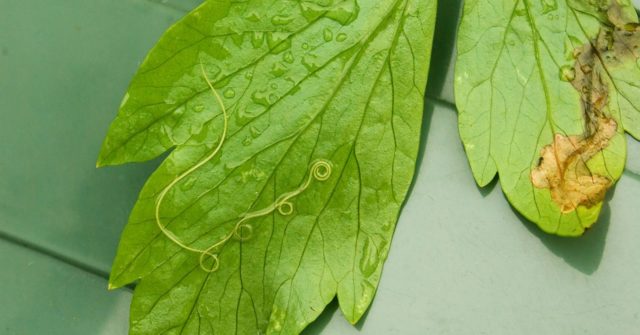Content
Astilba Peach Blossom is an ornamental flowering plant. The flower is popular in home floriculture due to its high resistance to frost and disease. Grown in the open field, it is absolutely unpretentious in care. However, unlike other varieties and varieties of Astilba, Peach Blossom has its own characteristics in development and nuances in cultivation.
Description of Astilba Peach Blossom
Astilba Peach Blossom is a perennial decorative flower native to East Asia. The plant belongs to the Saxifrage family, a characteristic feature of which is high viability even under unfavorable growing conditions. Astilba of the Peach Blossom variety has a high frost resistance, survives in 25-degree winter frosts. Therefore, the flower is cultivated in both middle and northern latitudes.
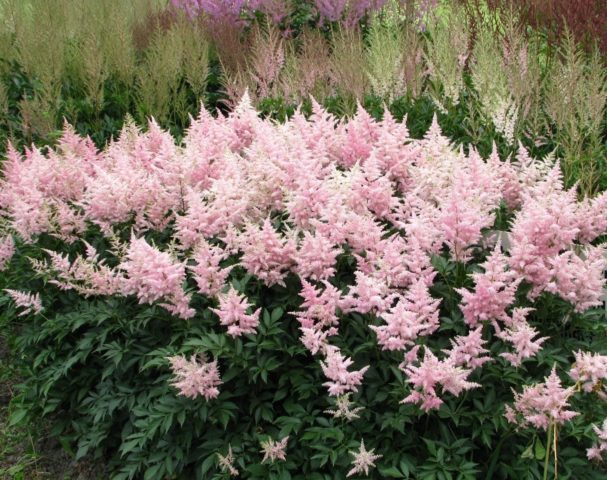
Astilba can remain a garden decoration for 3-4 months.
"Peach Blossom" at home reaches a height of no more than 2 meters. It grows in the form of a shrub, has high erect shoots. One bush grows 70-80 centimeters wide. Astilba grows very quickly, so the bush has a spreading over a large area around.
On each stem are feathery leaves with a smooth glossy surface. They are painted in a rich green color, but have a brownish edging along the edges. The leaf plates have a dense structure that protects the plant from burns and strong drafts.
Flowering features
The "Peach Blossom" variety belongs to the Japanese group of astilba, whose representatives are famous not only for their beautiful and abundant flowering, but also for their pleasant shades and splendor of inflorescences.
Flowering begins in mid-summer, usually at the end of June or the first half of July. The flowering period is about 1.5 months. On rare occasions in warmer regions, Peach Blossom can bloom until September.
Lush inflorescences of Japanese astilba are located at the top of the shoots, in the form of rhombic panicles. They are densely packed with small flowers with pale pink petals. The length of the inflorescences is on average no more than 15 centimeters.
After the Japanese astilba Peach Blossom fades, the inflorescences do not lose their shape and do not spoil the appearance of the bush. Fruits appear in place of flowers, seeds ripen here, with which the plant can subsequently be propagated.
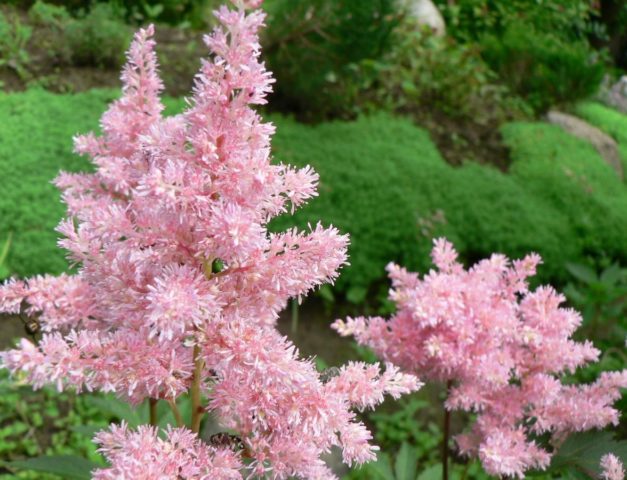
Peach Blossom inflorescences become very lush before wilting.
Application in design
Japanese astilba Peach Blossom is very often used to decorate flower beds, flower beds and other park and garden compositions. But it is worth noting that a shade-loving shrub feels best in combination with plants that exceed it in height. Ideal neighbors for Peach Blossom include tall shrubs and various types of trees. Astilba looks very beautiful against the background of conifers.
If the plant grows in areas shaded by any buildings, you can grow them with other flowers:
- tulips;
- hosts;
- irises;
- phlox;
- periwinkles.
Peach Blossom looks beautiful near various bodies of water: rivers, ponds and lakes.
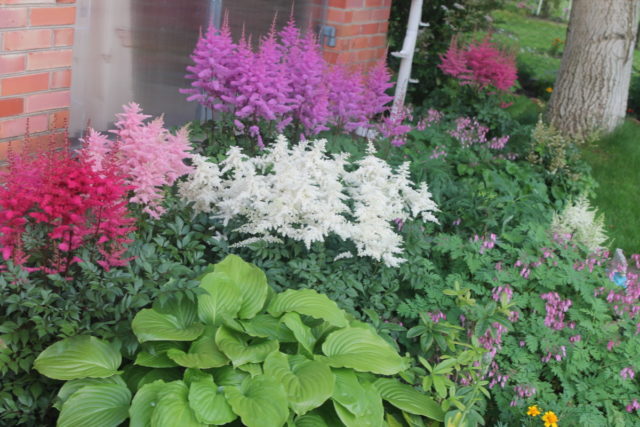
Several different varieties of astilba look very beautiful in one flower bed.
Reproduction methods
Astilba "Peach Blossom" is propagated by the seed method and by dividing the bush.The flower cannot boast of high seed germination, therefore, the method of dividing the mother bush into several parts is most often used. This method is the simplest, easiest and does not harm the bush.
The procedure is usually carried out in the spring when the bush is transplanted to a new place. For division, an adult healthy bush is taken, a part is cut off from it, on which at least 5 buds should be located. The root system is also divided, and rotten and dried out areas are cut off from it. Each part is planted in a separate place.
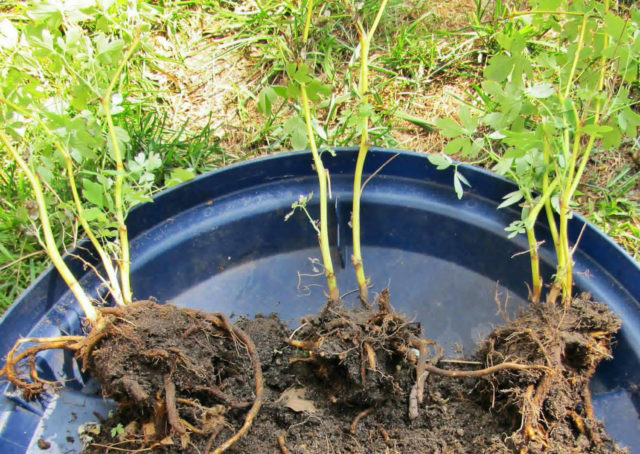
Dividing a bush is the most common and easy way to propagate astilba.
Landing algorithm
The planting procedure can be carried out from spring to late autumn. Saplings have good survival rate. But it is worth noting that you need to calculate the time, since after planting the flower must be watered for 15 days.
Astilba "Peach Blossom" needs to be grown in shaded areas, but with at least 14 hours of daylight. Therefore, it is recommended to grow the flower next to tall shrubs, trees or buildings.
Peach Blossom does not tolerate dry and overly moist soil, but grows well on all types of soil. The main rule is that the earth should be loose and not overdried. Therefore, experienced florists recommend mulching the ground after planting.
Staged planting of the Peach Blossom in open ground:
- Dig holes at least 30-40 centimeters apart.
- Pour 1 spoonful of bone meal into the holes. Moisten the pits with a solution of mullein or bird droppings.
- Place the seedlings in the holes, spreading the roots well.
- Fill around with a substrate of sod land, river sand, peat and humus. The growth point must be left below 4 centimeters above ground level.
Follow-up care
After planting astilba, it is recommended to mulch the soil surface. For this, you can use various materials:
- sawdust;
- dry leaves;
- chopped bark;
- expanded clay or peat crumb;
- small pebbles.
Mulching will help to retain moisture in the soil, which is why watering will reduce and reduce the risk of disease and waterlogging.
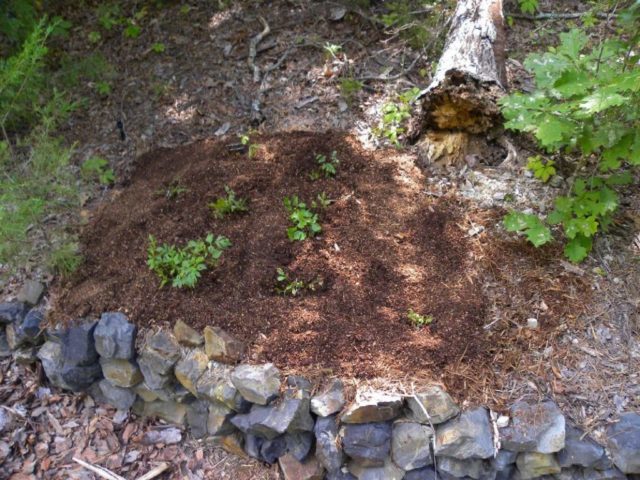
It is recommended to mulch the soil surface with sawdust or dry foliage.
Watering should be carried out regularly, preventing the soil from drying out. The health of the plant and the activity of flowering is influenced by high-quality irrigation water. It should not be rigid and with impurities, the temperature of the liquid is allowed at least 10-15 degrees.
Every 2 weeks, fertilizing with mineral fertilizers should be carried out, and after planting - with a high content of phosphorus and potassium. During flowering, fertilizing with nitrogen-containing fertilizers is increased.
After watering, it is recommended to loosen the soil. The procedure will help keep the soil moist and breathable, which will eliminate stagnant water. Loosening should be carried out 3 centimeters deep, trying not to damage the root system.
Preparing for winter
The last dressing before wintering should include not only mineral fertilizers, but also organic matter. It is necessary to thoroughly nourish the flower; for this, fertilizers are applied in liquid form.
Next, pruning is carried out with disinfected garden tools. Peach Blossom shoots should be cut at the root with sharp pruning shears. So it will be easier to cover the bush for wintering and you will not have to carry out additional removal of rotten shoots in the spring.

In late autumn, the astilbe bush is cut at the root
To protect astilba from the cold for the winter, it must be covered with dense material. For this, spunbond, spruce branches or lutrasil are suitable. Planks are placed on the edge of the shelter to fix the material.
Diseases and pests
Despite the fact that astilba "Peach Blossom" is highly resistant to various diseases, with improper care or lack of it, it can get sick. Sometimes pests can appear on the surface of the bush.
Among the few diseases and pests that affect "Peach Blossom" are:
- Pennitsa - a transparent viscous fluid appears in the axils of the leaves, similar to foam.
- Gallic nematoda - an insect that infects the root system, which stops the development of the bush.
- Strawberry nematoda - a pest of astilba, attacking leaves, inflorescences and shoots, which is why they begin to darken and fall off.
Conclusion
Astilba Peach Blossom is highly prized among flower growers for its beautiful pink flowers. This is one of the most sought-after varieties of the Japanese astilba group. With careful care and ideally created conditions, the flower will delight you with long flowering from mid-summer to autumn.
Testimonials
